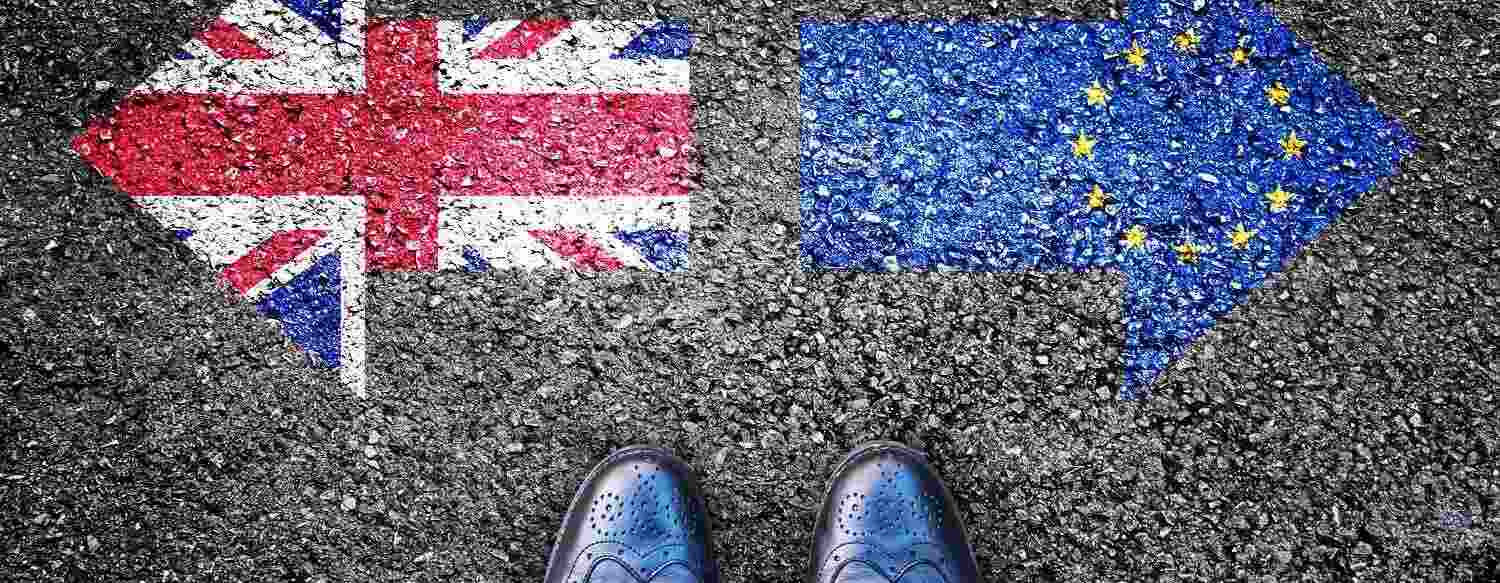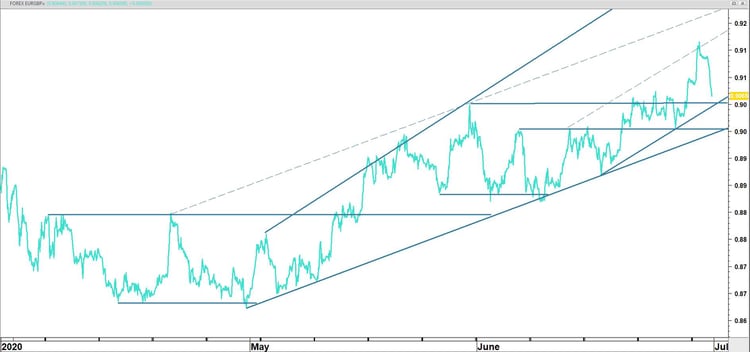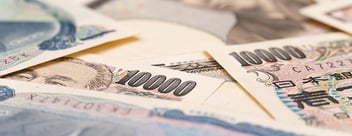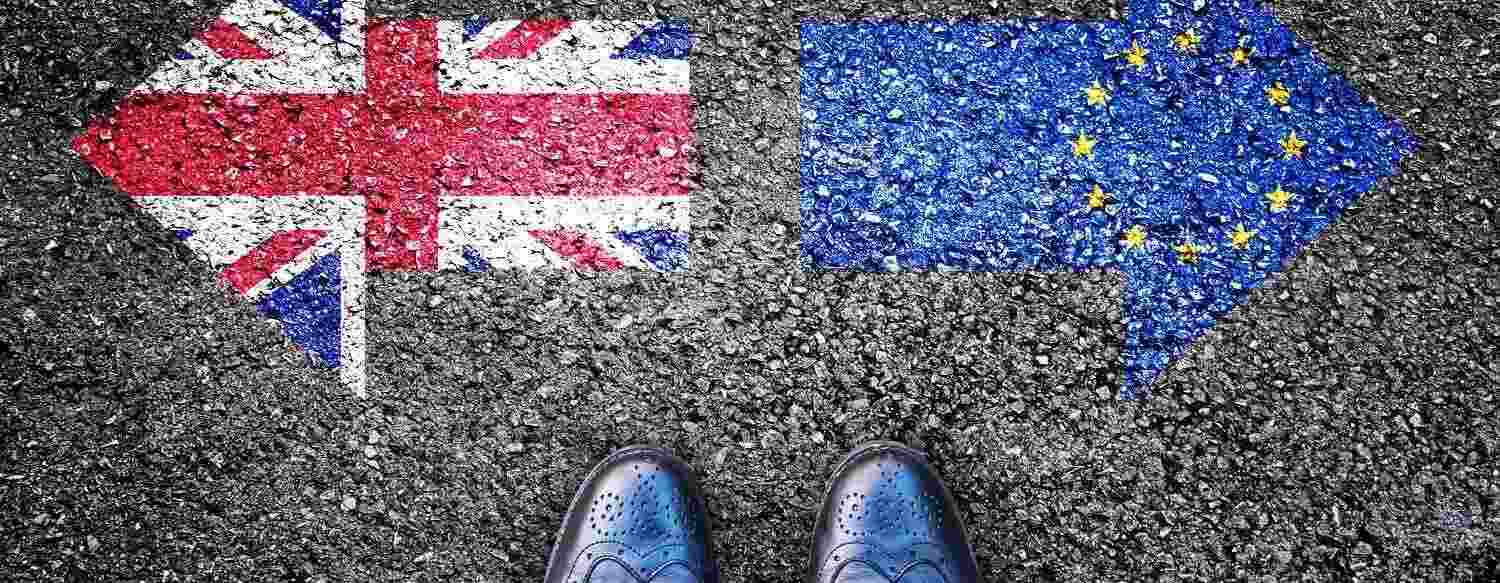
As I draft this technical analysis, on the evening of Tuesday 30 June, the foreign exchange market hasn’t exactly been optimistic that the UK will request an extension of the Brexit transition period before 1 July. British Prime Minister Boris Johnson and the European Union (EU) have been on a collision course for several months now.
But the transition period that came into effect at the beginning of this year will come to an end at midnight on 31 December 2020. Setting up a level playing field for companies to continue doing business with each other, as well as establishing fisheries regulations that suit both parties and tackling all manner of important legal matters (including human rights and jurisprudence) all remain a work in progress. As it stands, if you consider the EUR/GBP currency pair as a barometer of confidence, the EU appears to have landed on top.
Shortly after its introduction at the beginning of 1999, the euro gradually started to appreciate in value against the pound sterling. In recent years, the two currencies have engaged in a precarious balancing act, between EUR/GBP 0.83 and EUR/GBP 0.93. Mid-March of this year even saw a rise to EUR/GBP 0.95, if only temporarily, as a result of market panic with the outbreak of Covid-19. The most important indicators stem have arisen in the past three months. In the second half of April this year, a higher double trough was reached at EUR/GBP 0.87. Meanwhile, the euro once again began to gain ground.
To understand this development, three factors must be taken into account. Firstly, all information, including anticipated fluctuations, is factored into the exchange rate. Secondly, the process of higher troughs followed by higher peaks indicates how confidence develops. After all, the exchange rate anticipates future expectations. Thirdly, the process of successive higher troughs has remained intact since then. This is perceptible in the unbroken trendlines indicating recent market responses. With a level above EUR/GBP 0.90, the euro therefore seems to have the upper hand at the negotiating table as far as the foreign exchange market is concerned.
EUR/GBP on an hourly basis over the past three months
EUR/USD respite after a rally
The euro takes a breather after an intense rally against the US dollar at the peak of a several-year downwards trend.
EUR/USD since 2018
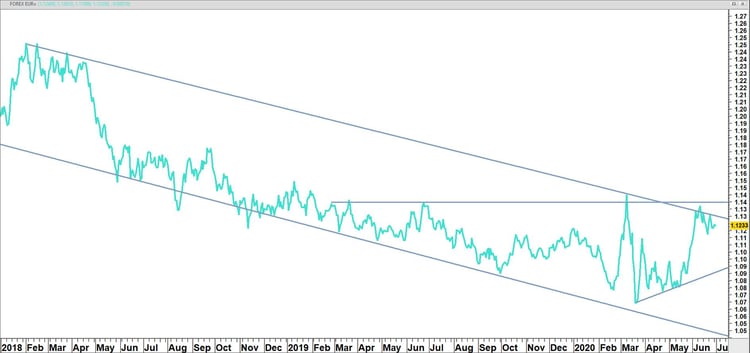
EUR/AUD
After a fierce rally against the Australian dollar, the euro fell back to EUR/AUD 1.60, regaining a level of relative calm.
EUR/AUD as of mid-2010
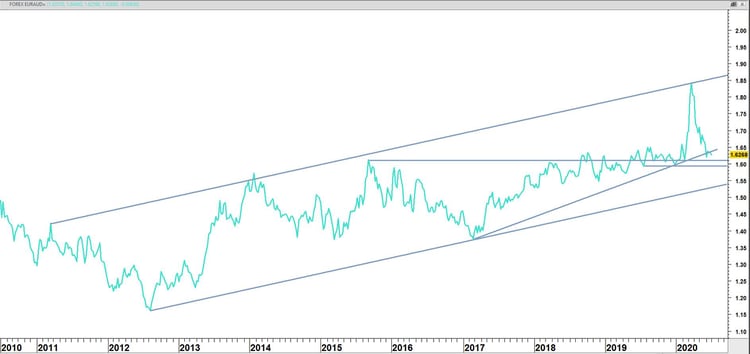
This marketing information was compiled by Edward Loef (mail@edwardloef.com). This blog post reflects Edward Loef's opinion in his capacity as Certified Financial Technician. This information is not intended as professional investment advice or as a recommendation to make certain investments through iBanFirst. It is intended as information provided to private individuals and not as advice for making commercial decisions. The information is explicitly not intended as an offer to buy or sell products. If you enter into a transaction with iBanFirst, we strongly advise you to determine the relevance of this information to your transaction and to take into account your experience, knowledge, financial capabilities, investment objectives and risk appetite.
Topics

